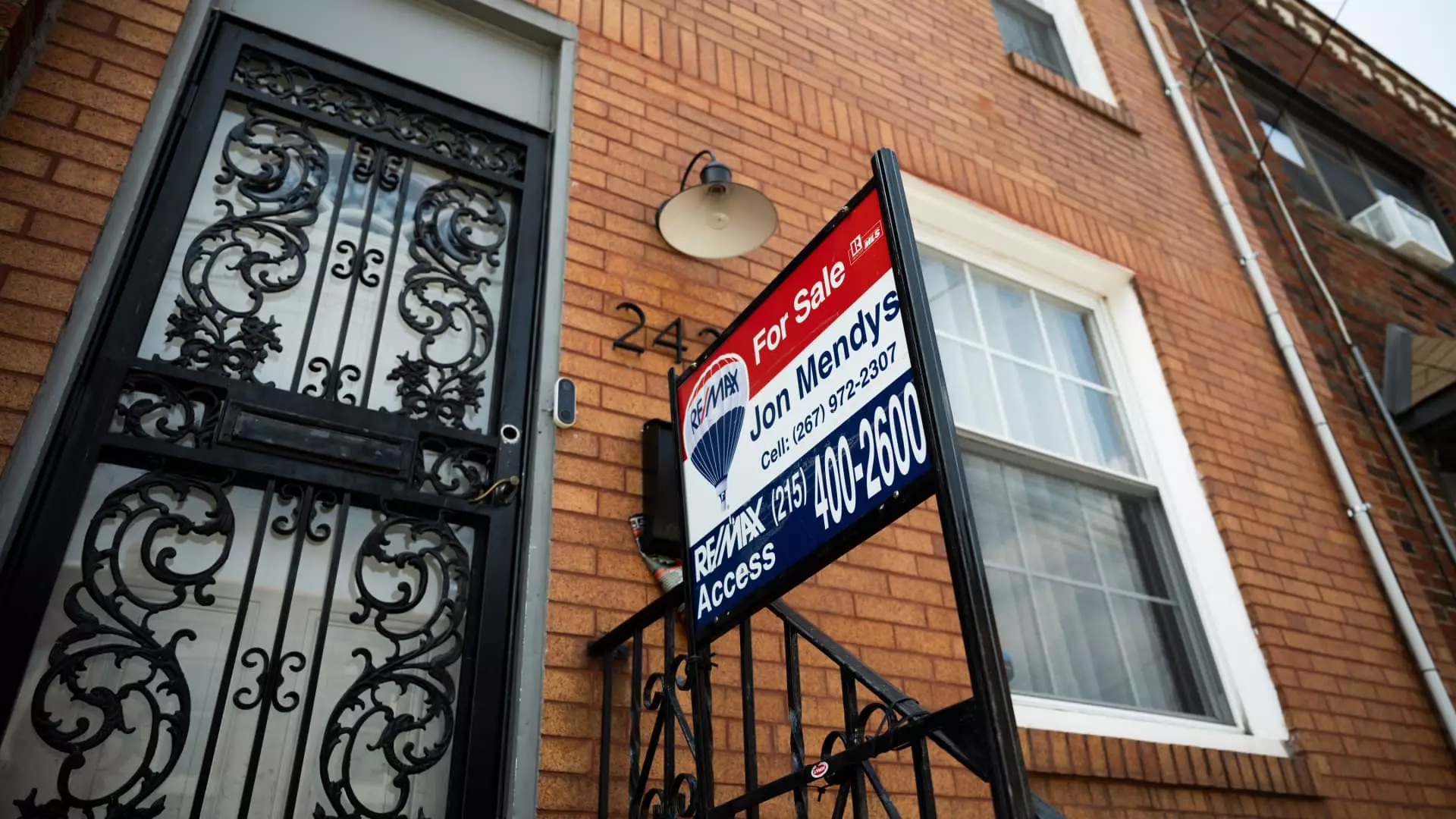The U.S. housing market is experiencing a downturn that reflects profound challenges faced by potential buyers. High mortgage rates, elevated home prices, and insufficient listing supply have created a milieu that discourages many from entering the market. Data from the National Association of Realtors (NAR) indicates a 4.9% decrease in sales of previously owned homes, dropping to an annualized rate of 4.08 million units in January—a concerning figure that indicates the market is operating at levels not seen in roughly 15 years. This decline was steeper than analysts’ projected 2.6%, indicating mounting pressures within the sector.
Despite these challenges, January 2024 saw a slight uptick in sales compared to the same month from the previous year, but the overall picture is alarming. The metrics suggest that closing sales recorded in January likely originated from contracts signed during a brief period when mortgage rates decreased from over 7% to just below 6%, further complicating the narrative around current buyer sentiment and future activity.
The unyielding nature of mortgage rates has been a significant factor in the current housing market malaise. Lawrence Yun, the chief economist for NAR, emphasized that repeated cuts in short-term interest rates by the Federal Reserve have been ineffective in driving down mortgage rates. Consequently, potential homebuyers are left grappling with high mortgage costs alongside already inflated property prices. The confluence of these conditions has resulted in a housing market characterized as increasingly unaffordable for average Americans—a sentiment echoed by industry professionals and prospective buyers alike.
As of the end of January, inventory saw a modest increase with 1.18 million homes available—a rise of 3.5% from December and a notable 17% increase from January 2024. While the uptick in inventory is encouraging, it translates to merely a 3.5-month supply available at the current sales pace. A balanced market should ideally consist of a 6-month supply, indicating that the disparity between supply and demand continues to exert upward pressure on home prices.
The data reflects a grim reality: the median home price in the U.S. reached $396,900 in January, marking an annual increase of 4.8% and the highest recorded amount for that month on record. This price inflation persists across all NAR-monitored regions, showcasing the tendency of home prices to persistently rise despite dwindling sales figures. Interestingly, nearly 15% of homes sold above their list prices, a figure that remained comparatively stable against both the previous month and the same period last year.
The larger narrative reveals a disparity in the housing market, where affluent buyers thrive while first-time homebuyers struggle significantly. All-cash offers accounted for 29% of transactions—historically high yet a decrease from the previous year’s 32%. Furthermore, first-time buyers represent a mere 28% of sales, which is a concerning figure far below historical averages of about 40%. This relegation of new entrants compounds the inequity within the housing market and raises questions about sustainable growth in the future.
Despite the slight increase in available inventory, many experts believe that a more substantial influx of homes and reduced mortgage rates is essential for revitalizing buyer interest. Yun mentioned that enhanced inventory could enable well-qualified buyers to take advantage of purchasing opportunities, which is crucial for enabling both first-time homeowners and those looking to upgrade their living situations.
Realtors report a notable weakness in buyer traffic, indicating that while there may be more homes on the market than previously, buyers remain hesitant—a trend highlighted by Yun’s observation that although real estate signs are going up, buyers are noticeably absent. This hesitance is a reflection of the broader economic uncertainty that continues to affect consumer confidence.
The U.S. housing market stands at a crossroads, beset by structural issues that demand comprehensive solutions. With buyers caught between rising costs and persistent rate pressures, any path forward will require not just an increase in inventory, but also a concerted effort to address underlying economic factors that contribute to the challenges faced by both buyers and the market at large.


Leave a Reply